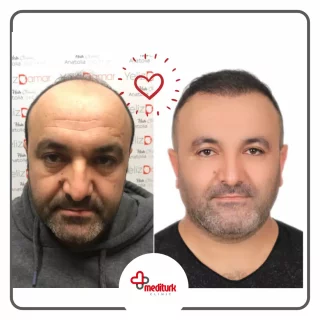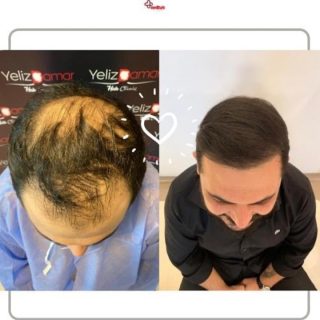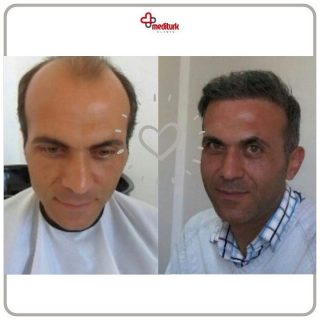Mediturk, also known as Hair Transplant Hair Clinic, is a specialist in hair and skin describing hair transplantation to its candidate patients with all its scientific and current aspects.
Hair affects a person’s appearance, social and psychological state as dozens of diseases can cause hair loss. Hair transplantation should be preceded by a correct diagnosis and hair treatments should be done accordingly. The technologies developed in recent years help people who complain about hair loss receive hair transplant treatment as a natural-looking and permanent solution for hair loss. An increasing number of people have been choosing Turkey for the affordably priced hair transplant services over the years.
Hair Transplant Hair Clinic, branded as Anatolia for Turkey and Mediturk for overseas patients, provides micro-surgical operations with ease and most convenient plans.
Fue Hair Transplantation
The most advanced and latest technique in hair transplant operation is the FUE hair transplantation technique. It can be defined as the process of transferring hair follicles that are resistant to shedding, taken from a certain area such as the beard, chest, especially the nape, to the area suffering from hair loss. FUE hair transplant involves taking healthy hair follicles one by one with FUE micromotors from the area, keeping them in special solutions for a while and transferring them to channels opened in accordance with the natural hair growth direction. When deciding on the front hairline, a hair transplant expert must ensure that it is symmetrical, harmonious and natural. The front hairline should be compatible with the patient’s face shape and anatomical structure.
The special techniques used in FUE hair transplantation leaves no cuts, stitches or scars on the skin. When performed under local anesthesia, FUE hair transplantation enables the patient not to feel any pain during or after the operation. The materials to be used during hair transplantation are prepared individually, in accordance with the thickness, length and number of hair follicles after specifying the donor and target areas. The numbing anesthesia process is followed by the removal of hair follicles are from the donor area with FUE micromotors. They are then taken to special solutions. Then, channels are opened for hair follicles in the area where the hair will be transplanted to. Hair is carefully taken from the solution and placed in the channels opened for transplantation.
After the hair transplant procedure, the transplanted area is closed after the dressing of the hair follicles. The dressing is removed during the planned control in our clinic. The transplanted hair starts to fall out after about 1 month. Then these new follicles begin to grow again. This process is completed in approximately 6 months-1 year.
DHI Hair Transplantation
In the DHI Hair Transplant, normal hair transplant stages are followed, except for the channel opening phase. Thanks to the Choi pen, Hair Transplant Hair Clinic expert collects the grafts, and transplant them directly to the target area. The purpose of the application is generally to preserve the existing hair image and to make hair transplants without shortening the hair. First of all, the donor area where the hair follicles will be taken is anesthetized with local anesthesia and the roots are collected one by one from the donor area with a Choi pen. Since there is no channel opening process in the DHI method, the prepared hair follicles are planted without waiting. The hair follicles taken are placed in pens called Choi. When placing hair follicles in the area to be transplanted, the natural direction of hair growth and natural hairline should be taken into account. DHI hair transplantation takes about 8-12 hours. As in the Fue method, washing starts on the second day after plantation and continues for 8-10 days.
How is a hair transplant planned?
A general definition of hair transplant requires transferring hair follicles that are resistant to shedding from the chest, beard, etc. to the area with hair deficiency. People between the ages of 20 and 60 are suitable candidates for hair transplantation. Although the procedure time varies by to the number of grafts needed, the transplant time is approximately 2-8 hours. On the day of the operation, it is recommended to come to the health center after taking a shower and washing the hair before. Blood thinners such as aspirin should not be taken until one week before the operation.
Our hair transplant procedure involves:
- Determining the transplantation plan and hairline
- Prescription of medications before the operation to accelerate wound healing and prevent infection.
- Sterilizing the patient’s operation area applying anesthesia
- Taking the hair of the person meticulously and one by one from the donor area
- Opening channels at appropriate angles and sizes according to the natural hair direction in the target area.
- Planting these grafts at the appropriate angles
- Dressing and other applications
- Performing the first wash on the 2nd day and removing the dressing
Why Hair Transplant Hair Clinic?
Performing hair transplantation in a sterile and hygienic clinic or hospital environment will minimize hair transplantation risks. An experienced team of specialist doctors and a professional healthcare team are indispensable for successful and natural results. Hair Transplant Hair Clinic has offered hair transplant services to thousands of patients inside and outside Turkey. Just reach out to us for a free hair analysis to see where we can make a difference.
Hair transplant is affected by the person’s age, diet, lifestyle, wound healing time, hormonal and genetic factors, quality of hair grafts, systemic diseases, environmental factors and smoking. Contact our team on WhatsApp to get the best hair transplant planning now!


















